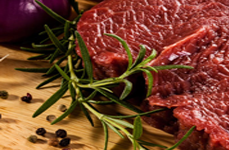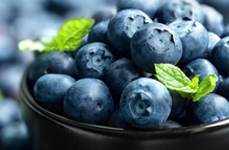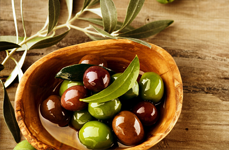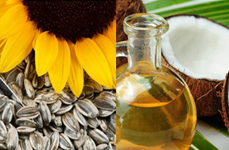Straight teeth and a bright smile might be two of the first things you notice about a person, but there’s a lot more that goes into optimal oral health. From your lips to your gums to your teeth to your tongue, every component of your mouth must be included in your daily routine for oral health. Luckily, each step is surprisingly simple. Here are 7 ways to take care of your oral health, plus a quick toothpaste guide, bonus tips on whitening your teeth, a homemade lip scrub recipe and lip balm recommendations.
#1 Stick to a Thorough Daily Oral Care Routine
There are several important components of a daily oral routine that all play critical roles in keeping your teeth and gums healthy outside of the dentist’s office.
• Brush your teeth at least twice per day. Most dentists recommend that you brush once in the morning as you start your day and again in the evening just before climbing into bed. You can also brush after eating your lunch to prevent midday bacteria growth and bad breath, but be gentle to preserve your tooth enamel.
• Clean your teeth and gums properly. Using small circular motions and short back-and-forth strokes, gently brush your teeth on all sides with a soft-bristle brush. Remember to brush carefully but thoroughly along your gum line as well.
• Don’t forget your tongue. Brushing your tongue daily is one of the best defenses against bad breath. Gently brush your tongue with your toothbrush whenever you brush your teeth to remove unwanted, foul-smelling bacteria.
• Floss regularly. Clean around your teeth with dental floss every time you brush to remove those harder-to-reach food particles that lead to bacteria growth, plaque formation and more.
• Rinse with mouthwash. Once you finish flossing, reach for your preferred rinse to remove any remaining bad breath-causing agents that your toothbrush and dental floss may have left behind.
#2 Get Regular Dental Checkups & Cleanings
Proper daily oral hygiene can help prevent a slew of issues that require professional attention, but it doesn’t replace biannual check-ups and cleanings with a dentist and dental hygienist. These exams take a much closer look at your oral health than you can manage in your own home. Dentists use X-rays to check for cavities in between your teeth and special tools to analyze your gum health. Hygienists then use their own specialty tools to remove plaque buildup that could otherwise become tartar or cavities over time. These dental exams and cleanings every 6 months are core parts of optimal oral care that should be prioritized.
#3 Look Inside Your Mouth Regularly
On the days that you’re not in the dentist’s chair under a magnifying mirror, it’s important to practice a little self-awareness with what’s going on in your mouth. Take inventory regularly of how your teeth and gums feel. If you notice any sudden or persistent tooth pain or sensitivity, that’s a sign that you should make a dentist appointment to get it checked out by a professional. The same goes for any chronic gum inflammation. Basically, if something doesn’t feel quite right, address it with your dentist as soon as possible.
#4 Eat a Well-Balanced Diet
Eating a wide variety of nutrient-dense whole foods promotes healthy teeth and gums in some pretty big ways. Calcium-rich foods like milk, yogurt, cheese, tofu, canned salmon, almonds and dark leafy greens help promote strong teeth. Foods high in phosphorus like eggs, fish, lean meats, dairy, nuts and beans also help keep your teeth strong. Meanwhile, vitamin C-rich foods like citrus fruits, tomatoes, peppers, broccoli, potatoes and spinach can play an active role in maintaining gum health. What’s more, snacking on fresh, fibrous produce like apples, carrots and celery can help you prevent plaque buildup on your teeth as you chew.
#5 Reduce Your Sugar Intake
Eating less added sugar is a core component of following a well-balanced diet, but it’s worth mentioning independently when it comes to oral health. When you eat sugar, it interacts with the bacteria and plaque already in your mouth to form an acid. This acid then erodes your tooth enamel over time, increasing your risk of tooth decay, cavities and more. Brushing, flossing and rinsing after having a sweet snack can help minimize some of this risk, but it’s still important to keep your sugar consumption in moderation.
#6 Limit Your Coffee, Soda, Tea & Alcohol Consumption
Plenty of drinks can also lead to unwanted tooth stain and decay if consumed too frequently and in high quantities. Both alcohol and soda contain lots of sugars that, like we mentioned earlier, create a more acidic environment in your mouth that promotes enamel erosion. Meanwhile, coffee is highly acidic on its own and the dark tint can easily stain even the whitest of teeth. Tea is usually only mildly acidic, but it carries similar stain risks as coffee. That doesn’t mean you need to leave them out of your diet entirely, but drink plain water when possible and follow other drinks with a glass of water and do an extra rinse with mouthwash when you’re done.
#7 Update Your Supplement Routine
We previously mentioned that eating a diet rich in calcium-loaded and vitamin C-laden foods can help promote both tooth and gum health. But if you’re worried that you’re not getting enough of these nutrients from food alone, there are plenty of supplement options that can help you give your mouth the nutrition it needs. Just remember to pair your calcium supplement with vitamin D to help your body absorb it, and you can also explore vitamin C powders designed to be mixed into a glass of water or smoothie if you want to try something a little different from a standard tablet. Also, try an oral probiotic which pulls double-duty to promote oral health and boost your immune defenses.
A Quick Guide to Picking the Right Toothpaste
Your toothpaste options are virtually endless, which means you’re bound to find a formula perfectly suited to both your oral care needs and taste buds. Many dentists recommend using a fluoride toothpaste because of its ability to promote overall oral health.5 But there are plenty of healthy options on the market today that don’t include fluoride and still offer benefits. Xylitol is another popular active ingredient due to its oral health-promoting properties.6 Coconut oil is a common natural option that is safe for most people as well.
At the end of the of the day, most toothpaste is going to help you maintain a healthy oral care routine, so it’s really just a matter of preference. Bring any questions and concerns you may have about toothpaste to your dental care provider and see what they recommend for your specific situation. It may take a little trial and error to find the product that gives you that clean mouthfeel you want, tastes pleasant and provides the health benefits you need, but it’s worth taking the time to experiment.
Natural Ways to Whiten Your Teeth
Now that we have the basics of oral care covered, let’s address something that everyone is curious about: making those pearly whites even whiter. The color of tooth enamel dulls and yellows over time no matter how meticulous you are with your diet, drink choices and dental hygiene. But the good news is there are ways to make your smile sparkle again.
• The combination of hydrogen peroxide and baking soda is one of the most popular natural teeth whitening methods. It helps to both clean your teeth and whiten their appearance. Only use it occasionally though, as in high quantities can strip your tooth enamel.
• Activated charcoal, a black powder made from coconut shells, is an especially trendy option. Activated charcoal is a highly absorbent and porous substance that can bind to the things that stain your teeth. To protect your tooth enamel, only use this method occasionally.
• Another popular method involves coconut oil in a practice called oil pulling. This ancient Ayurvedic technique has been used for thousands of years. Simply swish the oil around in your mouth as vigorously and thoroughly as possible for up to 20 minutes. Then spit it out into your garbage can (not down the drain).
• Apple cider vinegar is a popular natural cleaning product and disinfectant because the active ingredient, acetic acid, effectively kills bacteria. The antibacterial properties of apple cider vinegar make it useful for cleaning your mouth and whitening your teeth. However, acetic acid in high quantities used too frequently can erode tooth enamel, so only use this method occasionally.
Give Your Lips Some Love
Don’t worry—in all of this talk about teeth and gums, we didn’t forget about your lips. Once you’re done tending to the inside of your mouth, it’s time to focus on the outside. The skin on your lips is similar to the skin covering the rest of your body—it relies on the proper balance of moisture and nutrients to remain healthy and comfortable. But before you moisturize, it’s important to gently exfoliate and reveal the freshest layer of skin craving that moisture. Here’s our very own homemade lip scrub recipe that we use weekly to keep our lips soft, smooth and healthy.
Homemade Lip Scrub Recipe
Ingredients
• 1 part raw, organic brown sugar
• 1 part raw honey
• 1 part coconut oil or olive oil
• A drop of vanilla extract
• A dash of ground cinnamon
Directions
Combine all ingredients in a small bowl and mix well. Apply the mixture to your lips and gently massage it into your skin in circular motions for 30 to 60 seconds. Rinse it off with warm water, dab your lips dry with a washcloth and apply your favorite moisturizing lip balm when finished.
Our Favorite Lip Balm Recommendations
• On the market for a new lip balm? You’ve come to the right place. We keep a tube in our pockets, desk drawers and purses at all times to make sure we’re never caught with dry, cracked, uncomfortable chapped lips. Therefore, we have plenty of products we recommend. Below you’ll find a handful of our favorites.
• When keeping it simple, we like Swanson Shea Butter & Coconut Lip Balm. It contains just 5 natural ingredients, it smells slightly sweet, and it provides easy moisture whenever you need it.
• For extra soothing power, we reach for Dr. Bronner’s Naked Organic Lip Balm. Its blend of jojoba seed oil, avocado oil and hemp seed oil is extra hydrating.
• When you want a fruity twist, try NOW Foods Completely Kissable Lip Balm in pomegranate. The flavor is refreshing and the olive and sunflower oils are super nourishing.
• Curious to try a CBD hemp extract-infused lip balm? Check out Veritas Farms Whole Hemp Oil Lip Balm in French vanilla. It contains 25 milligrams of full spectrum CBD hemp oil, plus organic cocoa butter and shea butter.
• And last but not least, you can’t go wrong with the tried-and-true original peppermint lip balm from Burt’s Bees. This classic beeswax option is 100% natural and is enriched with vitamin E.























LEAVE A COMMENT :
Comments sort : Newest / Oldest / Most Upvoted